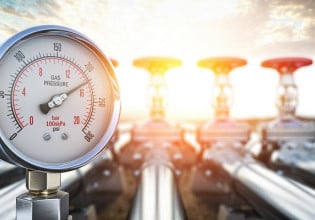C
Hi all,
We would like to achieve a maximum part load efficiency on our CCGT and at the same time maintain our maximum output to respectable values when needed. Of course, we also have to respect the allowed NOx emissions.
As our SCR is over-sized, we were wondering if we could reduce the water mass flow injected in the combustion chamber of our LM6000 PG Sprint so that we would increase our part load efficiency, for instance with a water to fuel (FOD) ratio (WFR) below 0.4.
However, when power output would be needed, we would revert to the original WFR above 1.
According to your experience, do you think GE would accept to implement in the DCS a WFR control optimizing the GT heat rate at part load and the power output at base load?
If so, what WFR ranges have you so far encountered? Is for instance a 0.4-1 range to large?
Kind regards,
Cedbont
We would like to achieve a maximum part load efficiency on our CCGT and at the same time maintain our maximum output to respectable values when needed. Of course, we also have to respect the allowed NOx emissions.
As our SCR is over-sized, we were wondering if we could reduce the water mass flow injected in the combustion chamber of our LM6000 PG Sprint so that we would increase our part load efficiency, for instance with a water to fuel (FOD) ratio (WFR) below 0.4.
However, when power output would be needed, we would revert to the original WFR above 1.
According to your experience, do you think GE would accept to implement in the DCS a WFR control optimizing the GT heat rate at part load and the power output at base load?
If so, what WFR ranges have you so far encountered? Is for instance a 0.4-1 range to large?
Kind regards,
Cedbont






